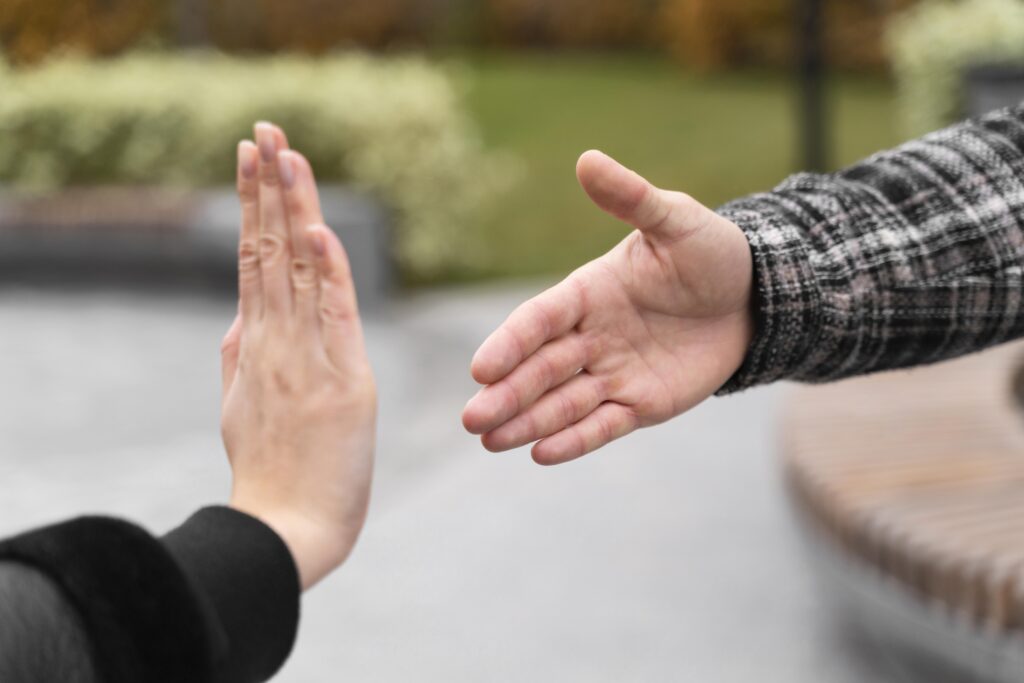Do you ever get stuck in periods of deep sadness and grief ? The symptoms related to persistent sadness and grief are known as depression. Depression is a mental health disorder that has different types. Such grieved or sad feelings often fade away within a few days or weeks but usually their disappearance depends on your circumstances. However intense sad feelings with gloomy thoughts that last for three weeks or more disrupting your abilities of proper thinking or functioning may be a sign of Depression. Types of depression you have depends on your lifestyle, circumstances and health condition.
Symptoms of depression that can help you to understand the stage of your depression include:
- Dark moods.
- Lack of energy.
- Distracted attention.
- Inability to focus.
- Deep feelings of grief.
- Feelings of hopelessness.
- Appetite loss.
- Disturbed sleep cycle.
- Withdrawing from family and friends.
- Extreme thinking about self-harm or death.
- Lack of interest in your favorite activities.
- Difficulty getting through your normal activities.

You may have some of these symptoms as a victim of depression because depression affects everyone differently. If you have symptoms of depression that are not listed here, talk to your doctor to find out if those symptoms belong to depression. Although the presence of such symptoms is a sign of depression, sometimes having these symptoms is normal without having depression attacks. However, disturbance in your day-to-day life due to these symptoms is an alarming condition and may be the result of depression.
This blog article will help you understand different types of depression. Although these types have common symptoms, they still have some key differences. Let’s take a look at types of depression and how they can affect you.
Major Types of Depression
It is a type of depression with recurring symptoms. According to a 2021 research, about 15.2 million people in the country experience at least two major episodes of depression. More forms of depression found in people include:
- Major Depressive Disorder.
- Severe Depression.
- Unipolar Depression.
- Classic Depression.
- Chronic Depression.
Major types of depression impacts your whole life and you may experience its symptoms most of the day, every day. Major depression is similar to many other mental health conditions as it has little to do with what’s happening around you. Depression is a condition that destroys your quality of life because despite having a dream job, a loving family, good friends, and a high-standard lifestyle you may still have depression. Sometimes you cannot find an obvious reason for your depression. But it doesn’t mean that your depression is not real or you start to ignore this condition. Major depression tells you about itself through strongly effective symptoms such as:
- Grief or gloom.
- Hypersomnia or insomnia.
- Feeling tired every time.
- Changes in your appetite.
- Lack of interest in formerly pleasurable activities.
- Memory loss.
- Inability to get focused.
- Irritation in concentration.
- Unexplained pains in the body.
- Unconscious thoughts of suicide or self-harm.
- Anxiety and unnecessary worry.
Such symptoms are clear signs of major depression and they last for several weeks or sometimes for months.
Depression affects people in different ways. For example, you may have a single episode of major depression in your life but someone else may experience it throughout their life. Major depression causes a drastic impact on your daily activities and relationships. Therefore, it is essential to recover your quality of life.
Persistent Depression
This type of depression lasts for at least three years or more. Professional healthcare providers also refer to this type of depression as chronic depression or dysthymia. Its symptoms might not be as intense as major depression but it still damages your daily task routine and your relationships.
More symptoms of persistent depression include:
- Low energy.
- Changes in your sleep-wake cycles.
- The feeling of inadequacy.
- Hopelessness or deep sadness.
- Memory and concentration problems.
- Social withdrawal.
- Inability to feel happy even on enjoyable events.
- Changes in appetite and eating habits.

It is a long-term phase of depression but the severity of its symptoms can become less intense before the time of being worsened again. Sometimes you can experience episodes of major depression while you already have persistent depressive disorder. This condition is known as double depression. Persistent depression lasts for a longer time and people sometimes think of its symptoms as their normal outlook on life.
Bipolar Disorder or Manic Depression
This type of depression involves periods of hypomania and mania when you experience happiness in your life. Happiness periods alternate with depression periods consecutively. Manic depression is renamed as bipolar disorder according to modern research while hypomania is a less severe type of mania. Significant symptoms include:
- Feeling euphoric or elated.
- Increased confidence with high self-esteem.
- Irritability.
- Self-destructive behavior.
- Grandiose thinking.
- Reduced sleep.
- High energy levels.
- Racing thoughts and speech.
According to medical research, if you experience an episode of mania for the last seven days or were in hospital for the treatment of depression, you may be diagnosed with bipolar type 1 disorder. Sometimes depressive episodes also recur following manic episodes.
However, depressive episodes have many similar symptoms as major depression. These may be:
- Feelings of emptiness or sadness.
- Decreased energy levels.
- Fatigue.
- Sleep disturbance.
- Suicidal thoughts.

Sometimes, depressive episodes get more severe and you may experience hallucinations and delusions. You can also experience mixed episodes of depression and mania. Hallucinations are the false feelings where you see, hear, touch, smell or feel things that are not present there in real life. For example, you may hear voices or see people who are not present at that moment. While a delusional feel can be defined as a closely held belief that is false or doesn’t make any sense. However, as a patient of depression, those all will be real for you and you may insist on taking those voices and people as real.
Depressive Psychosis
This type of depression is characterized by experience of periods of psychosis that usually involve delusions and hallucinations. Therefore, medical science refers to this type of depression as a major depressive disorder with psychotic features. However, most healthcare professionals still refer to this phenomenon as psychotic depression or depressive psychosis. Its major symptoms include physical symptoms along with slowed physical movements and problems sitting still.
Perinatal Depression
It is the type of depression linked with a peripartum onset that occurs usually during pregnancy or within 6 months of childbirth. This term can be used for depression after giving birth. Hence, perinatal depression occurs while you’re pregnant.
This type of depression causes changes in your brain that lead to mood swings, triggered by hormonal changes during pregnancy and childbirth. In addition, physical discomfort and lack of sleep that often accompany pregnancy also trigger this type of depression. Its symptoms are found as severe as those of major depression including:
- Rage or anger.
- Exhaustion.
- Anxiety.
- Fatigue and sadness.
- Extreme tension about the baby’s health.
- Thoughts of harming the baby or self-harm.
Previous effects of depression can increase the risk of developing perinatal depression. Perinatal depression can happen to any person who has just given birth or is pregnant.
Premenstrual Dysphoric Disorder
Premenstrual syndrome is also recognized as a severe form of depression called premenstrual dysphoric disorder (PMDD). It has both types of symptoms including psychological and physical but psychological symptoms are more severe and dominating. Symptoms of PMDD are more hazardous than PMS. For example, premenstrual depression gets severe in the days leading up to your period and you may feel more emotional. However, in some cases people with PMDD experience a level of depression and anxiety that gets in the way of day-to-day functions of the brain.
Other symptoms of PMDD include:
- Headaches.
- Muscle and joint pain.
- Cramps.
- Bloating.
- Anger and irritability.
- Mood swings.
- Binge eating or food cravings.
- Despair or sadness.
- Sleep problems.
- Lack of energy and tiredness.
- Trouble focusing.
In addition, hormonal changes are also a cause of inducing perinatal depression. Its symptoms usually appear just after ovulation and start to ease up once you get your menstruation. Sometimes, you may dismiss easily the symptoms of PMDD but it becomes very severe in most cases, even you may even have thoughts of suicide.
Seasonal Depression
This type of depression relates to certain seasons. Medical science refers to it as seasonal effective disorder or seasonal depression because it has similar symptoms as major depressive disorder with a seasonal pattern.
Usually, people get affected by this type of depression during the winter months. Its symptoms often fall as days start to get shorter and continue through winter. Major symptoms of seasonal depression include:
- Feelings of unworthiness and hopelessness.
- Weight gain.
- Hypersomnia.
- Social withdrawal.
As the season goes on, its symptoms may get worse and it may lead you to suicidal thoughts. Symptoms tend to improve with the start of the spring season. Professional healthcare providers relate this improvement with your bodily rhythms in response to the increase in natural light.
Situational Depression
This type of depression is also known as adjustment disorder with depressed feelings. It has similar symptoms as those in major depression. Situational depression is specifically brought on by special situations or events such as:
- Facing intense legal troubles.
- Facing serious financial difficulties.
- Being unemployed for a long time.
- Going through divorce or child custody cases.
- The death of a loved one.
- A serious life-threatening event.
Feeling anxious or sad due to a specific thought or event or even withdrawing from others during such events or situations is a normal thing. However, situational depression gets severe when its feelings or symptoms start to feel out of proportion with triggering situations and interfere with your daily life activities.
Its symptoms usually tend to start within 3 to 4 months of the initial event. Its common symptoms are:
- Inability to concentrate.
- Fatigue.
- Sleep problems.
- Appetite changes.
- Hopelessness and anxiety.
- Frequent crying.
- Social withdrawal.
Atypical Depression
This type of depression refers to depression that temporarily goes away in response to some positive and happy events happening in your life. Healthcare professionals may refer to it as a major depressive disorder with some atypical characteristics.
Atypical depression is not rare or unusual. It is like other types of depression and you cannot take it more or less seriously than other types of depression. In this type of depression, you may not always seem depressed to others. Therefore it is a particularly challenging type of depression. You cannot understand your condition sometimes. It also occurs during an episode of major depression.
In this type of depression, you may not always seem depressed to others. Therefore it is a particularly challenging type of depression. You cannot understand your condition sometimes. It also occurs during an episode of major depression.
Common symptoms include:
- Various pains and aches.
- Sensitivity to criticism and feelings of rejection.
- Insomnia.
- Much more sleep than usual.
- Poor body image.
- Disordered eating habits.
- Weight gain due to increased appetite.
How can you Know Which Type You Have?
Having any type of depression requires following up with a doctor. All types of depression discussed in this blog article are treatable, though the procedure may be time-consuming. Your doctor takes some time to find the right treatment for you. Therefore, which type of depression you have can be identified by consulting a doctor who can study your medical history and examine the persistent symptoms to diagnose the exact type of depression you have.
If you never had a depressive disorder before, consult with a primary care physician. Because sometimes underlying health conditions look similar to depression symptoms. Provide complete information about your symptoms as you can, to your doctor. Tell your doctor:
- When you first experience the symptoms.
- How are these symptoms affecting your daily life?
- Any information about your medical history related to mental illness.
- List of all medications or over-the-counter medicines you are taking.
Telling everything about you and your condition may be difficult for you but this will help your doctor to give you a more accurate diagnosis to refer you to the right type of mental health professional.
Conclusion
Depression is a mental illness where you feel sad more from time to time. Intense feelings of sadness and hopelessness make your everyday life difficult. Seek immediate medical help if the symptoms of depression persist for more than three weeks.
Healthcare professionals will diagnose which type of depression has affected you. He will design the right treatment plan that may include psychotherapy, antidepressant medications, and electroconvulsive therapy. A nutritious diet and regular exercise as good lifestyle changes can play a crucial role in improving your mood.







